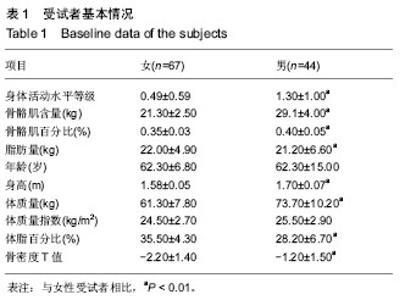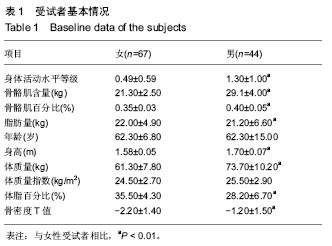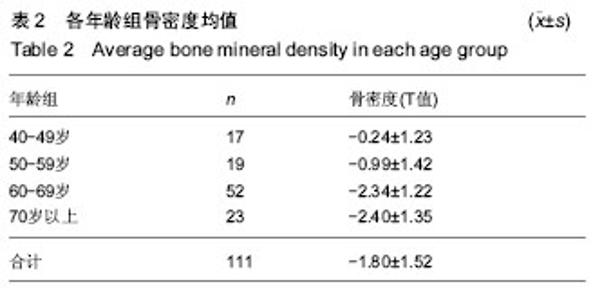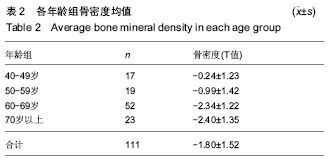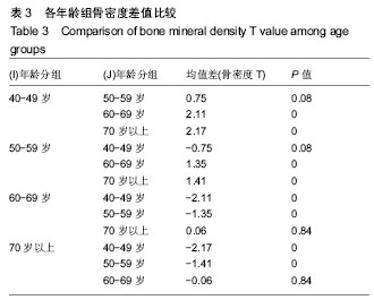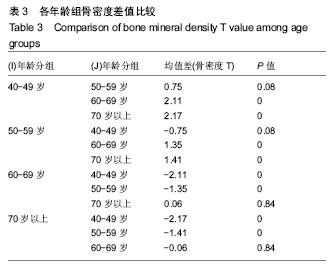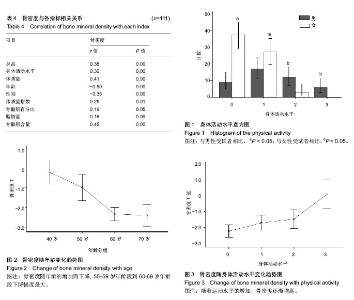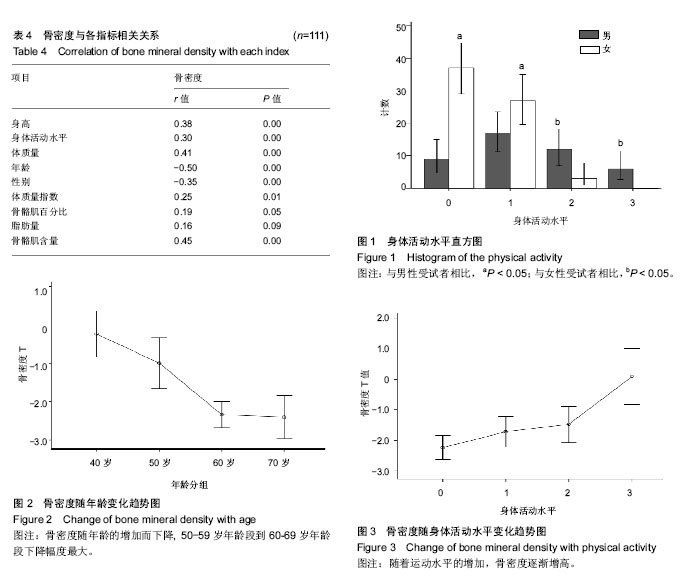| [1] 陈敏敏,杜艳萍,洪维,等.上海社区老年人生活方式与跟骨定量超声骨密度的相关性[J].中华骨质疏松和骨矿盐疾病杂志, 2016,9(02):166-173.[2] 王昭琦,王立恒,王媚.老年骨质疏松患者肌力与骨密度等指标的相关性研究及不同干预方法的疗效评价[J].中国骨质疏松杂志, 2014,20(07): 815-819.[3] 乔秀芳,潘红英,王军利.不同锻炼水平对大学生骨密度和体成分的影响及其相关性分析[J].中国骨质疏松杂志, 2017,23(05):594-598.[4] 董宏,孟良,王荣辉.体育锻炼对中老年人群骨密度影响的meta分析[J].北京体育大学学报,2016,39(03):58-65+87.[5] 徐锋鹏,胡敏,黄俊豪,等.不同类型运动对骨密度影响的研究进展[J].上海体育学院学报,2017,41(01):55-60.[6] 陈文聪,温煦,李旭鸿.中老年人骨骼肌含量、脂肪含量与骨密度的关系[J].中国体育科技,2017,53(01):90-96+110.[7] 张军,陆大江.有氧运动结合抗阻力量训练对中年女性身体成分和骨密度的影响[J].中国老年学杂志,2016,36(18):4553-4556.[8] 刘云发,陶萍,石丽杰.不同生活方式对60~69岁老年人骨密度的影响[J].沈阳体育学院学报,2013,32(05):97-100.[9] 陈金鳌,杨帆,陆阿明.长期力量训练后老年人骨密度变化特征[J].北京体育大学学报,2013,36(07):74-78.[10] 谭思洁,曹立全,陈文政.青年女性肌力、身体成分与骨密度的关联性研究[J].中国康复医学杂志,2012,27(10):903-907. [11] 吉洪林,赵光圣.散打训练对人体骨密度和身体成分的影响及相关性研究[J].中国体育科技,2011,47(01):112-116+120. [12] 谭思洁,曹立全,陈文政.青年女性肌力、身体成分与骨密度的关联性研究[J].中国康复医学杂志,2012,27(10):903-907.[13] 崔新雯,张一民,王彦桃,等.影响绝经前女性骨密度的敏感因素探析[J].成都体育学院学报,2015,41(02):106-109.[14] 崔新雯,张一民,王彦桃,等.未绝经女性骨量减少风险自评估方法的建立[J].北京体育大学学报,2016,39(03):66-72.[15] 张晓波,邓士琳.日常性体力活动与绝经后骨质疏松症发病风险的关联性[J].吉林大学学报(医学版),2012,38(04):775-778.[16] 周志雄,郑陆,叶鸣,等.健康绝经妇女髋关节和腰背肌力与骨密度的关系[J].中国运动医学杂志,2011,30(03):236-240.[17] 李红娟,王正珍,严翊.体力活动与骨健康[J].北京体育大学学报, 2012, 35(08):37-42.[18] 王晓燕,肖德生,王明芳.广东大学生骨量与膳食营养体力活动的相关性[J].中国学校卫生,2013,34(10):1214-1215+1218.[19] 蔡富华,章晓霜,熊静宇,等.青春后期学生静坐、体力活动与骨密度的相关研究[J].中国学校体育(高等教育),2014,1(10):84-88.[20] 钱芊.大学生田径运动员和普通大学生不同部位骨密度的均值比较[J].中国组织工程研究,2017,21(32):5097-5102.[21] 郭辉.成年人心肺耐力自评价方法的研制与参考等级的建立[D].北京体育大学,2016.[22] 唐勇,郑兵.三种人群BMI、WHR、BMD以及PWV和ABI比较研究[J].成都体育学院学报,2013,39(07):91-94.[23] 付蕾,柯丹丹,张玲莉,陆大江.运动与骨代谢:骨密度、骨生物力学及生化指标的评价[J].中国组织工程研究, 2014,18(46):7487-7491.[24] 谭克理.不同专项运动训练对男大学生运动员骨密度的影响[J].西安体育学院学报,2011,28(06):721-724.[25] 李在军,邹晓丽.羽毛球运动对女大学生骨密度的影响[J].当代体育科技, 2012,2(34):12+14.[26] 赵立君,李凤丽,陈琼,等.篮球专业和非篮球专业男性大学生身体不同部位骨密度对比分析[J].吉林大学学报(医学版), 2007(06):1077-1079.[27] 席磊.健身操和瑜伽交替练习对女大学生体成分、骨密度及心肺功能等的影响研究[D].曲阜:曲阜师范大学,2011.[28] 杨洪涛.核心力量训练对大学生骨密度及躯干屈伸肌力量影响的实证研究[J].体育世界(学术),2015(3):71-74.[29] 陈金鳌,张霈,杨帆,等.青年和老年男女抗阻训练后的骨密度变化特征[J].成都体育学院学报,2013,39(02):83-88.[30] 黄何平,宁亮生,温志宏.跟骨骨密度及骨强度与运动的关系[J].中国组织工程研究与临床康复,2008,12(46):9134-9137.[31] 刘保华.纵跳对悬吊大鼠骨密度、生物力学指标及股骨表达的影响[D].上海:华东师范大学,2010.[32] Kim PS, Shin YH, Noh SK, et al. Beneficial effects of judo training on bone mineral density of high-school boys in Korea. Biol Sport. 2013; 30(4):295-299.[33] Ruchan IRI. The effect of physical activity on bone mineral density. Int J Phys Sci.2011; 6(16):4097-4101.[34] 陈金标,秦林林,马海波,等.桡骨超远端体积骨密度的测量及性别间的比较[J].中日友好医院学报,2000,14(3):125-128.[35] 顾芳,陈晓红,郑陆.北京市女大学生骨密度及体成分变化特征的研究[J].北京体育大学学报,2011,34(08):57-59. [36] 李纪江,白冰,何颖欣.成年人身体成分与跟骨骨密度相关性探讨[J].四川体育科学,2010(01):106-109+136.[37] Bratland-Sanda S, Martinsen EW, Sundgot-Borgen J. Changes in physical fitness, bone mineral density and body composition during inpatient treatment of underweight and normal weight females with longstanding eating disorders. Int J Environ Res Public Health. 2012; 9(1):315-330. |
